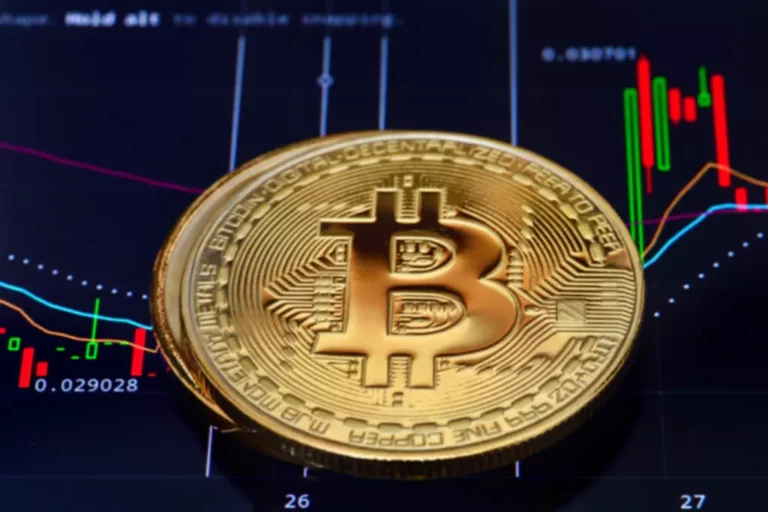Buyside & Sellside Liquidity LuxAlgo Indicator by LuxAlgo
Content
To understand external range liquidity, we first need to define the external range. The high of this range is referred to as “buy-side buy side liquidity vs sell side liquidity liquidity,” under the assumption that buy stops are resting above this level. Conversely, the low of the range is known as “sell-side liquidity,” where sell stops are presumed to be positioned. Recognizing supply and demand dynamics and acknowledging the influence of institutional investors enhances traders’ confidence, particularly in hard-to-read markets.
- This holding behavior has further tightened liquidity, bolstering Bitcoin’s upward trajectory.
- Buyside liquidity represents the availability of buyers in the market, including individual traders, institutional investors, corporations, and central banks, who actively seek to purchase foreign currencies.
- If selling unexpectedly resumes, piercing through a deeply fortified accumulate zone can spark a wave of long liquidation.
- Understanding how ICT Liquidity Pools influence market behavior allows traders to anticipate potential reversals and position themselves accordingly.
- Typically, traders position sell stop orders below significant price levels, such as historical lows, including weekly lows, daily lows, or equivalent benchmarks.
What Is ICT Internal Range Liquidity?
For many traders, you can click by their name to Peer-to-peer see the trades along with the SIM/Live designation. If this is your first introduction to liquidity consumption concepts, just think about floors & ceilings. We can only move up by breaking through the ceiling and down by breaking through the floor.
ICT Internal and External Range Liquidity: A Deep Dive

A cornerstone of these decisions is a thorough understanding of business liquidity. This crucial element has the potential to shape deal outcomes and significantly influence the overarching transaction strategy. By applying these strategies, traders can refine their approach to different market conditions, enhancing their ability to profit from both short-term fluctuations and long-term trends. https://www.xcritical.com/ This guide is designed to enhance your trading skills, from understanding why prices move to applying advanced liquidity concepts in your trading strategy.
Conclusion: Mastering ICT Liquidity Pool Trading for Consistent Success
In today’s fragmented environment of platforms and venues, the act of sourcing liquidity has changed. The buy-side is therefore increasingly leaning on sell-side relationships to ensure access to all relevant liquidity pools and to guarantee best execution is achieved for their end clients. The more confidence the buy-side has in executing trades, the more the shift will continue,” argues Keith Todd, chief executive at Trading Technologies. At a major area of resistance, the offers above that resistance WILL be significantly thicker. This doesn’t guarantee that price will reverse there; it actually means that other traders are holding the opinion that this is a key level.
Balanced Liquidity and Impact on Forex Market

Market orders, on the other hand, involve buying or selling at the current market price. Sell-side liquidity allows sellers to sell securities in large amounts without impacting prices. It gives flexibility for setting specific selling prices or selling at the current market price. ICT is an approach that strives to decipher the intricate dynamics of the markets, as well as replicate the behaviour of astute institutional investors. The integration and application of ICT trading concepts can deliver a substantial boost to a trader’s performance. ICT traders monitor the market sessions and look for specific times when trading volume is high enough to move prices quickly.
If you want to use buy side and sell side liquidity, here’s what you need to know. This ensures that investors, especially big ones, can execute significant trades with minimal slippage, avoiding substantial price fluctuations. Self-confessed Forex Geek spending my days researching and testing everything forex related.
Order Blocks (OB) and Fair Value Gaps (FVG) are essential tools in ICT Liquidity Pool trading that provide high-probability setups for trade entries. An Order Block is a consolidation area on the chart where large institutional orders have been placed, creating a zone of support or resistance. Fair Value Gaps, on the other hand, refer to price gaps on the chart that indicate an imbalance in supply and demand.
Using session highs and lows can be a valuable tool for traders in identifying trend reversals and finding trading opportunities. When it comes to identifying liquidity imbalances, traders need to pay attention to swing points and the price action around them. Swing points, which are determined by higher lows and lower highs, represent areas where traders often place their stops, creating liquidity. Sell-side liquidity can be found below swing lows, while buy-side liquidity can be found above swing highs. Therefore, understanding the relationship between swing points and order flow is crucial for predicting market movements and capitalizing on trading opportunities.
Bitcoin, a decentralized currency that defies the sway of central banks or administrators, transacts electronically, circumventing intermediaries via a peer-to-peer network. AJ, a passionate journalist since Yemen’s 2011 Arab Spring, has honed his skills worldwide for over a decade. According to Bitfinex, miners are now in a strong position, supported by substantial unrealized profits. This holding behavior has further tightened liquidity, bolstering Bitcoin’s upward trajectory. This steep drop mirrors the liquidity tightening seen during Bitcoin’s rallies in the first and fourth quarters of last year, signaling constrained availability during periods of heightened demand.
Some of the most significant liquidity levels in the market are created by old highs and old lows, which can provide valuable insights and trading opportunities. Old highs and old lows refer to previous swing points that stand out in the market. These levels can act as liquidity levels, attracting the attention of traders looking for potential reversals or trade setups.
Liquidity within the market can be divided into External Liquidity and Internal Liquidity, both of which are crucial in understanding the overall market structure and dynamics. With the growing availability of technology, the challenge today lies in integrating the plethora of systems and platforms now on offer. Another key driver of this adaptation is the increased presence of additional liquidity providers within the landscape. Buy-side reliance on the sell-side has shifted thanks to the rise in a more independent and data-driven approach to decision-making. Advanced analytics, direct market access, and AI-powered tools have given buy-side institutions the ability to carry out functions traditionally handled by the sell-side, such as research and trade execution.
Understanding the ICT dealing range is crucial as it helps traders identify the key areas where price is likely to react, thus providing better entry and exit points for trades. An ICT dealing range is the area between an established Swing High and Swing Low, where both have taken the liquidity of a previous high or low. This range forms the foundation for understanding internal and external range liquidity. ICT traders focus on finding key levels where market participants are likely to place their stop orders in the futures market. Monitoring confirmed liquidity zones offer actionable insight into potential support/resistance flips.
It helps us to understand that it’s slow moves that allow liquidity to build in its wake, and that rapid moves tend to drop back just as rapidly into a larger vacuum. First, if we look at a move, we can surmise that a fast move up will leave a bigger relative liquidity vacuum in its wake than a slow grind up where there is more time for the liquidity to repair behind us. That being the case, it’s more likely that the price will continue upwards once a solid floor is found. At this point, it’s probably worth pointing out that in any market, there are 3 prices.
An ICT Liquidity Pool is a key concept in trading that refers to price levels where a large number of buy or sell orders are concentrated. These pools are formed at significant highs and lows on a chart, where institutional traders place their large orders, creating the necessary liquidity for substantial market movements. In essence, an ICT Liquidity Pool acts as a magnet, attracting price action to these levels and often leading to reversals or sharp price movements. In the ever-evolving world of financial markets, mastering ICT Liquidity Pool dynamics is crucial for any trader aiming to succeed. An ICT Liquidity Pool refers to specific areas on a price chart where liquidity—either buy-side or sell-side—is concentrated.







